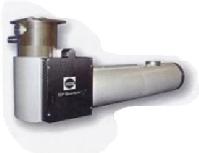Electron Energy Loss Spectroscopy (EELS) & Imaging Filter (EF-TEM)
In Electron Energy Loss Spectroscopy (EELS) a material is exposed to a beam of electrons with a known, narrow range of kinetic energies, normally resulting from those generated within a Transmission Electron Microscope.
 How does it work?
How does it work?
Some of the electrons will undergo inelastic scattering, which means that they lose energy and have their paths slightly and randomly deflected. The amount of energy loss can be measured via an electron spectrometer and interpreted in terms of what caused the energy loss. Inelastic interactions include phonon excitations, inter and intra band transitions, plasmon excitations, inner shell ionizations, and Čerenkov radiation. The inner-shell ionizations are particularly useful for detecting the elemental components of a material.
(EFTEM) is a technique used in Transmission Electron Microscopy, in which only electrons of particular kinetic energies are used to form the image or diffraction pattern. The technique can be used to aid chemical analysis of the sample in conjunction with complementary techniques such as electron crystallography.
Applications:
Materials analysis; chemical analysis; interfacial analysis; bandgap measurements; thickness measurements; bonding studies.
Sample Handling Requirements:
Solid. Must be capable of forming a disc no greater than 3mm diameter and 100nm thickness. Variable Temperature experiments are feasible over the range -150 to +600 C.
Complementary Techniques
Warwick capability:
Contact:
Claire Gerard: c dot gerard at warwick dot ac dot uk / 07385 145064

Typical results format, and sample:
Status |
Availability |
|
|
Warwick collect/analyse data |
| Warwick collect data | |
 |
Available to user with expertise/ contribution |
 |
Spare capacity for collaborative research |
BOOK NOW |



